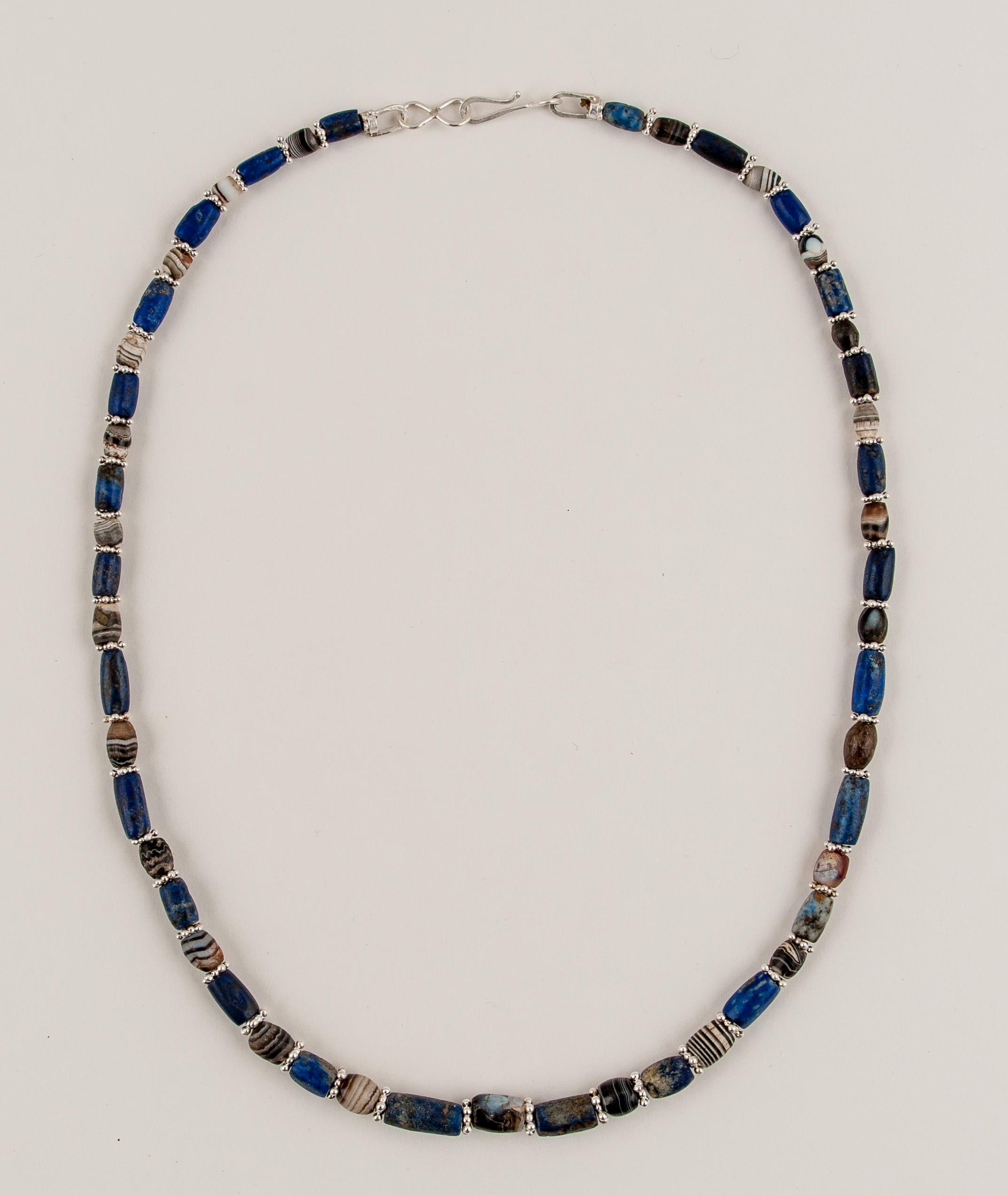Ancient Lapis Lazuli Barrel Beads with Agate and Silver Spacers
Collection:
Swat Valley
Material:
Lapis Lazuli, Agate, Silver
Size:
The necklace is 20 5/8 inches (52.5 cm) in length. The necklace weighs 50 gm.
Price:
$1,200.00
A necklace of twenty-six lapis lazuli barrel beads, twenty-five black agate barrels beads, and fifty ten-ball star-shaped silver spacer beads. The agate barrel beads graduate in size from 9 mm to 6.2 mm in length and 6.4 mm in diameter to 4.5 mm. The drill hole diameters range from 1.4 mm to 2mm. The lapis beads are of similar size: The longest is 1.4 cm in length, 6.1 mm in width with a drill hole of 2.4 mm, but most are 9-10mm in length and 4-6 mm in width with drill holes of 2 mm diameter. The silver star beads are composed of a core of five balls in a circle with an additional five spheres forming the second layer outwards. The beads come from the Swat valley in what is now northern Pakistan but what was in ancient times the Kingdom of Uddiyana. From the end of the 6th century B.C.E., the Swat Valley was part of the Persian Achmenid Empire, called Gandhara. Conquored by Alexander the Great and ceded to his successor Nikator to Chandragupta, founder of the Mauryan Empire, it was then ruled in rapid succession by the Bactrian Greeks, the Sakas and the Parthians. These were followed by the Kushan dynasty from Central Asia which added Swat to its Gandhara Buddhist Empire and ruled it for 400 years. Kanishka I, the third emperor of the dynasty was a strong supporter of Buddhism. So it is not incorrect to think of these beads as “Buddhist beads” as Buddhist art and culture flourished in this area at that time. The beads are somewhere between one thousand and two thousand years old. Afghanistan was a part of this kingdom of Uddiyana (“the garden”); the gigantic Buddha statues at Bamiyan give testimony to its Buddhist past. There are ruins of a large stupa still there in the Swat Valley. Uddiyana was of considerable strategic and commercial importance in the ancient world. Its fertile valleys, warm climate, and above all, its central position on the busy trade routes between Asia and the Mediterranean made it valuable territory to control. As a consequence, it suffered numerous conquests,with each conqueror leaving an imprint on the culture; the result was a cosmopolitan, multi-ethnic society which is reflected in the many types and materials of the beads that are found there.
